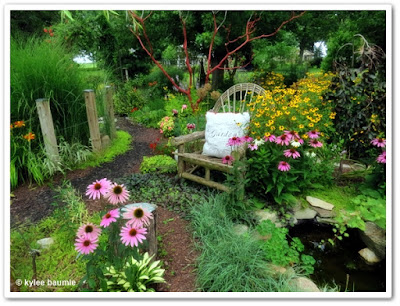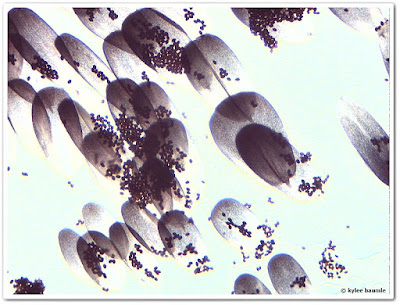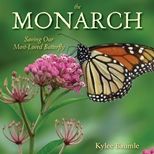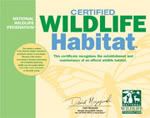It's that time of year again. The garden is winding down, things are turning brown, and it's really tempting to just get rid of things that are looking less than pretty. I feel it, too. But in the last several years, I've gotten a different perspective on this fall clean-up thing, from hearing other people share their views on it, but also from being observant in my own garden.
First, I heard, "Leave your grasses and perennials for winter interest." No problem with the grasses, because yeah, they do look beautiful when they catch the snow and it's more fun to look out there and see something taller than my knees.
 I heard them mention how seed heads, like those on coneflowers, feed birds and other wildlife, so I started to leave those kinds of things, because winters can be cruel. Heavy snows and frigid temperatures make it difficult for birds and animals to find food, which can be in short supply in the first place.
I heard them mention how seed heads, like those on coneflowers, feed birds and other wildlife, so I started to leave those kinds of things, because winters can be cruel. Heavy snows and frigid temperatures make it difficult for birds and animals to find food, which can be in short supply in the first place.And then there are the leaves. We've got 100+ trees on Our Little Acre, with several of them being over 200 years old. That means we have a lot of leaves on the ground every fall and even into winter, since the largest trees are oaks. As anyone who has oaks knows, they lose leaves all winter long.
Even though we can't leave all those leaves all winter long, we started leaving a layer of them for both plant insulation and for the insects and other critters that use the leaf litter for winter protection.
These are all good reasons to not do a "scorched earth" method of fall clean-up. I do understand that it means more work in the spring, but from a human standpoint, it's a do it now or do it later kind of thing, not really adding any work to the grand scheme of things. We choose to do it later in an effort to help wildlife.
But the purpose of my post today is to focus on insects, specifically those that we love to see in our gardens in the summer. Did you know that a large number of them spend their winters right here and need the very things that gardeners may remove in the fall?
NEED.
Planting to attract butterflies and pollinators to our gardens is a thing. It's a really hot trend that I hope becomes commonplace, not just for environmentalists.
But it isn't enough to plant what they need during their breeding season. That's commendable, but what about the off season?
Is it fair to attract them to our gardens and then sabotage our efforts - and their lives - by destroying what they need to complete their life cycle?
Not every insect or arthropod migrates. Many have the ability to lower the freezing point of their bodies and go into a state of diapause. Some can't survive, but they lay eggs that can. Some spend the winter in a pupal stage.
Let's look at these:
- Lady beetles (ladybugs) - We have elevated ladybugs to their rightful place in the world of environmental sustainability. These small beetles overwinter as adults clustered together under leaf litter. I personally have encountered large numbers of them in spring. In fact, I try not to clear leaves away until I see them moving around and emerging on their own.
- Swallowtails - These butterflies overwinter in their chrysalides and just because you've never seen them doesn't mean they aren't there. Camouflage is an important factor in their survival. Do you think the Eastern black swallowtails you've attracted to your garden in summer all leave your garden in winter?
They lay their eggs on your dill, fennel, parsley, rue, and carrot tops. They eat those until they form their chrysalides nearby - in your garden, likely on stiff stems of plants. - Leafcutter bees - I personally love these guys. They're the ones that make the round circles in the leaves of some of your garden plants. I smile when I see that, because I know that my garden is helping a native pollinator. They take those leaf rounds back to line their nests, which are often in the hollow stems of plants. They often return to those nests to spend the winter.
Remember too, that even some of the insects that might be undesirable to you are food for those you do want. The food chain is real. The more you clean your gardens of healthy dead material, the more you're disrupting the natural life cycle of the ecosystem.
I'm not discouraging the removal of diseased plants and excessive leaf cover. I just want you to be aware of how many insects and other living things that are loved and important to us in summer, need your garden in winter, too.
































 "Bejeweled"
"Bejeweled"


